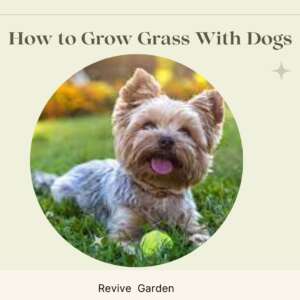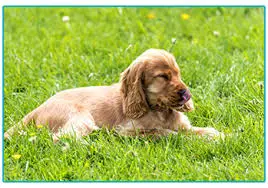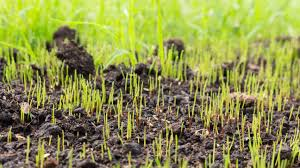Table of Contents
 While nothing is more important than the love and care of a dog’s owner, dogs can and do sometimes cause damage to the home and even harm the family. If your dog is particularly active, tends to dig holes in the yard or urine all over the grass, or loves to run around on the lawn, it may be difficult to grow grass because of its presence.
While nothing is more important than the love and care of a dog’s owner, dogs can and do sometimes cause damage to the home and even harm the family. If your dog is particularly active, tends to dig holes in the yard or urine all over the grass, or loves to run around on the lawn, it may be difficult to grow grass because of its presence.
In this article, you will get information about growing grass, even if you have dogs that love digging the yard. You can take a few actions towards having healthy grass once again and making your yard more pet-friendly.
Okay, so let’s begin!
Destruction by Dogs on Your Grass
Most lawn damage is caused by dogs urinating on the grass. It’s commonly believed that a female dog’s pee is more acidic than a male’s. Therefore, many wrongly assume it is even more damaging than a male’s.
Dog urine contains various components, including salts, that can be harmful to grass, but it is not the acidity of the pee itself that causes the damage. Your dog’s kidneys filter out the byproducts of digestion and excrete them in the form of urine. In the same way that an excessive amount of fertilizer may burn your lawn, so can have your dog defecate on it.

When applied at too high of a concentration, fertilizers can dry out the grass and kill the grass blades. These plant cells have been irreparably damaged. Female dogs tend to urinate in a more concentrated area than male dogs, which may explain why you’ve noticed more severe burns from your female dog. Instead of kneeling on the ground, some men may seek out their preferred tree or plant.
Lawns can be damaged when dogs use the same paths repeatedly. Some canine companions go bonkers whenever they encounter foot traffic or passing cars. That’s why you always see them chasing and barking at the same spot. The sooner you’ll notice wear issues on the turf, the larger your dogs are, and the more frequently they run on a steady path. It’s also a significant pain to replant these places because the dogs would inevitably crush the tender shoots.
The Essentials of Successful Lawn Maintenance with Dogs
Here are the fundamentals of grass growth when dogs are present:
- The first step is to take baby steps. Limit the lawn to what you’re comfortable taking care of. The neighborhood dog park can still be visited occasionally for a change of pace (and to socialize with other canine residents).
- Grow hardy seedlings. Grass seed mixtures, plugs, and sod sold at discount stores are not worth the savings. Spend your money on premium grass seed for resilient lawn grass. Tall fescue and Kentucky bluegrass are all viable possibilities in states with a more moderate climate. The best grass for dogs in the South includes Zoysia Grass, Bermuda grass, and Bahia Grass.
- Discover a bright side, wherever more sunlight can reach the yard, plant grass there. Growing grass in the shade is significantly more challenging when dogs are around than when dogs are not.
- A sandy location is recommended. Look for a spot that already has sandy soil. Sow seeds into at least a few inches of sandy loam or high-quality topsoil if you must work with clay soil. Dogs can wreak on the lawn, and the yard can do the same to the dogs. More importantly, the sandy loam is ideal for grass growth.
- Don’t go downhill. Compared to lawns with steep slopes, those generally flat are significantly less of a hassle to care for (particularly with paw traffic around).
- Make sure your roots go down far, and your blades extend far. Robust and healthy grass plants have long edges and a broad, rooted base. All dogs will love these grasses. Cut your grass to three inches, and avoid removing more than one-third of a blade at a time; to promote profound root growth, water the grass seldom but thoroughly.
- Ensure rapid growth of grass. Maintain a healthy growth rate by giving the lawn adequate water and nitrogen. Fertilize your grass with a safe product for pets, such as Organic Lawn Food. Keep a tight check on your lawn’s health since overfeeding and overwatering can be detrimental.
Grass Varieties to Cultivate
A hardy grass variety is a way to go if you have already tried training without success. It’s important to plant seeds when the weather is warm enough for them to sprout. Get some soil amendments and select a hardy seed variety.
The most extraordinary grass for a pet-friendly yard is the same grass used on a sports field because it can withstand traffic and wear and tear. The seed you choose should also have a high rate of development. Even a gentle touch on a newly germinated plant might cause serious harm. Planting fast-growing seeds will also hasten the process of repair.

The ability of a seed to produce deep roots is crucial, as these roots are more resilient to harm and may even deter digging. You may do this with the help of my grass-planting fertilization instructions. Grass that thrives in your region is the final component. Damage is more likely to occur on stressed grass.
Generally speaking, five main types of grass are noted for their durability and suitability as pet grass, though this might vary based on your location.
- Bluegrass from Kentucky
- Annual Ryegrass
- The fescue grass
- Bermuda Grass, and
- Zoysia.
All of these grasses are robust in terms of their root systems and pace of growth.
Fixing Dog Holes in Grass
- Dogs can wreak significant damage to your lawn; unfortunately, there isn’t much you can do to fix it.
- Rake up as much dead grass as possible from the damaged or patchy regions.
- Sprinkle some ground limestone on top. You’re probably hoping for the highest degree of perfection. Watering the area can aid in the absorption of the limestone. Then, leave it for at least a week.
- Fill the holes with topsoil and scatter grass seeds so they can germinate. To keep the roots from washing away, water the area gently every day for a couple of weeks. Eventually, your area will blend in with the rest of your grass.
Knowing that you may never have a completely weed-free, dog-free lawn is the first step in successfully cultivating grass with dogs.
However, if you take the initiative to fix damaged areas, train your dog to behave as you would like, and consistently try to make your yard pet-friendly, you and your dog will be able to enjoy your lawn together for many years to come.
Conclusion:
This article presented the solution to growing the grass on your lawn while having dogs and ways to prevent the destruction caused by dogs. If you are also a pet dog on your lawn, then this article will help you to grow the grass on your lawn in easy ways.
